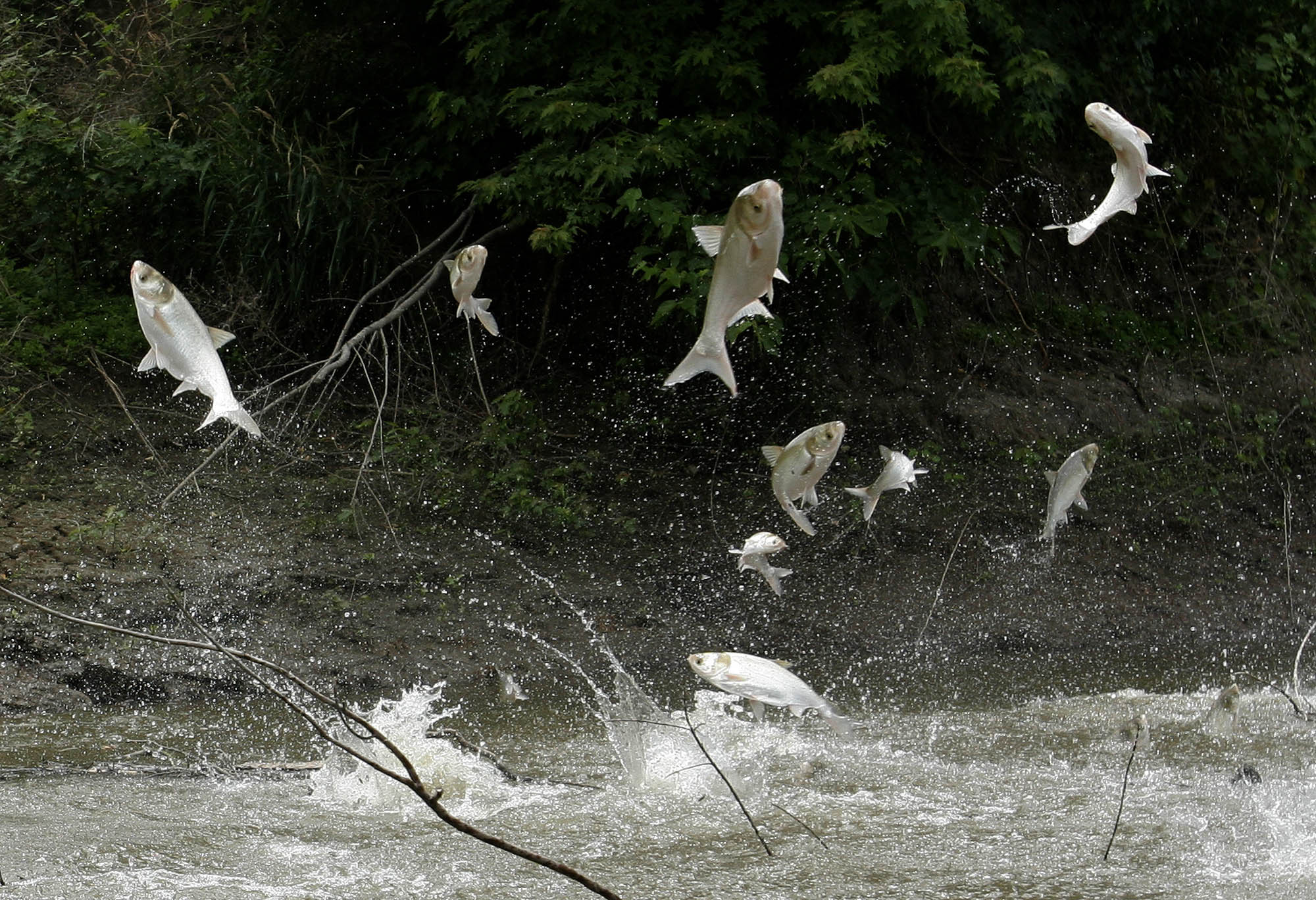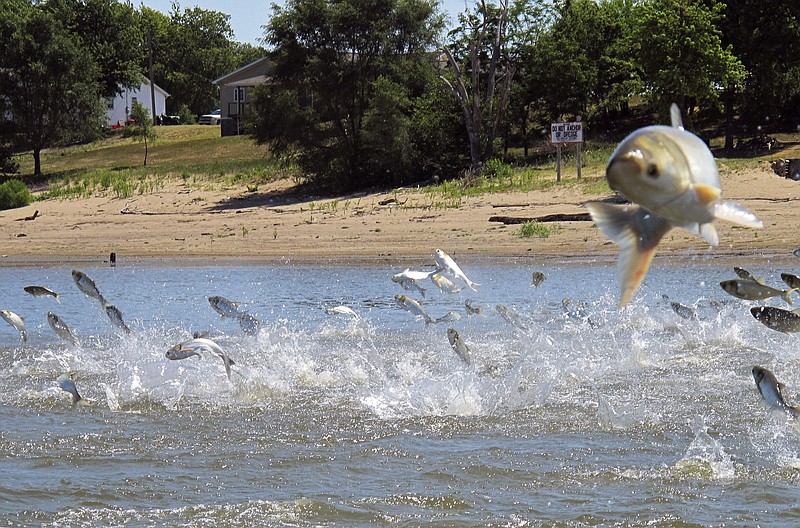 In this undated file photo, Asian silver carp, famous for jumping out of the water when startled, are shown on the Illinois River near its confluence with the Spoon River near Havana, Ill. Big River Fish Corporation, located along the Illinois River in southeastern Pike County about 70 miles southwest of Springfield, has secured a $2 million federal grant to expand its operation after signing a contract to send 30 million pounds of Asian carp to China - ironically, the very place the invasive fish came from. (AP Photo/The State Journal-Register, Chris Young)
In this undated file photo, Asian silver carp, famous for jumping out of the water when startled, are shown on the Illinois River near its confluence with the Spoon River near Havana, Ill. Big River Fish Corporation, located along the Illinois River in southeastern Pike County about 70 miles southwest of Springfield, has secured a $2 million federal grant to expand its operation after signing a contract to send 30 million pounds of Asian carp to China - ironically, the very place the invasive fish came from. (AP Photo/The State Journal-Register, Chris Young)Tennessee's efforts to keep an invasive fish that wreaks havoc on waterways from advancing through its river system have been largely successful, according to state officials, but there's still concern about widespread devastation to the region's freshwater biodiversity if the fish navigate farther South.
Tennessee Wildlife Resources Agency and partners have subsidized commercial fishermen to harvest the fish, the Asian carp, from waterways and are in the midst of installing a sound barrier they hope will keep the fish from moving through locks. So far, it seems to be working, according to Tennessee Fish and Wildlife Commission Chairman Kurt Holbert. The fish and wildlife commission is the governing body for TWRA and directed $500,000 to TWRA in 2018 for its program to manage the carp population. It will continue to allocate $250,000 annually to fund the program.
"I think it's exceeded our expectations, and people are seeing less carp this year than they have in the past," Holbert said.
But that could all change in an instant. State agencies have been actively working more than six years to manage the Asian carp population. The large invasive fish outcompete native species for food and space, and with limited natural predators, they drive out other populations. So far, they've wreaked havoc in Illinois, Missouri and Kentucky. Millions of pounds of the fish swim in Midwestern states. There's a large federal effort to keep the fish out of the Great Lakes. Currently, most of the fish have been kept to the north, with large populations in Lake Barkley and Kentucky Lake along the Tennessee-Kentucky border.
Tennessee wildlife personnel are monitoring those populations to ensure they don't move through river systems and into Tennessee. So far, they haven't seen successful spawning.
"[Carp] have specific spawning requirements. You'd think they would [deposit eggs], but we haven't seen it," TWRA chief of fisheries Frank Fiss said. "We haven't seen small fish since 2015. We have a lot to learn about why they spawn and don't spawn. We're not seeing active successful spawning in Kentucky. If we were, this would be a totally different conversation. It'd be questionable if we could control it at that point."
Fiss has worked to get ahead of the problem in Southeast Tennessee. New fishing regulations were put in place in addition to the work to incentivize commercial fishermen and add sound barriers.
The hope is a prototype sound barrier in construction at Lake Barkley Lock and Dam in Southern Kentucky will keep the fish from spreading through the Tennessee River system and its renowned freshwater ecosystem. It's expected to be completed this year. If the sound barrier works, state officials will seek federal funds to build new sound barriers across the state, which cost millions of dollars each. If it doesn't, there are limited options.
"The only other option is an electric barrier," Fiss said. "There's interest in that from people in the Chattanooga area, but they're very expensive and they're dangerous. You can get electrocuted; it'd be a real risk to have publicly navigable locks with electricity."
Some groups see the problem as the largest facing the U.S. freshwater ecosystem. Silver and bighead carp, which are two species of Asian carp threatening the Southeast, are capable of eating up to 40% of their body weight each day and can decimate the native ecosystem. Groups like Bass Anglers Sportsman Society, known as B.A.S.S, are teaming together with local municipalities and state agencies to eradicate the problem.
"We help support the war on carp and combat the problem. We were one of the first groups to recognize this is going to be an economic problem," Tennessee B.A.S.S. Nation Conservation Director Jake Davis said.
The organization has raised thousands of dollars to help TWRA and other groups with the problem. Its members worry the fish will alter the ecosystem, eventually destroying tourism and economic opportunities on which towns along the river, like Dayton, Tennessee, rely.
"I think it's hugely important to rural communities along Tennessee River system that depend on the tourism and money the water provides," Holbert said.
Contact staff writer Mark Pace at mpace@timesfreepress.com or 423-757-6659. Follow him on Twitter @themarkpace and on Facebook at ChattanoogaOutdoorsTFP.
